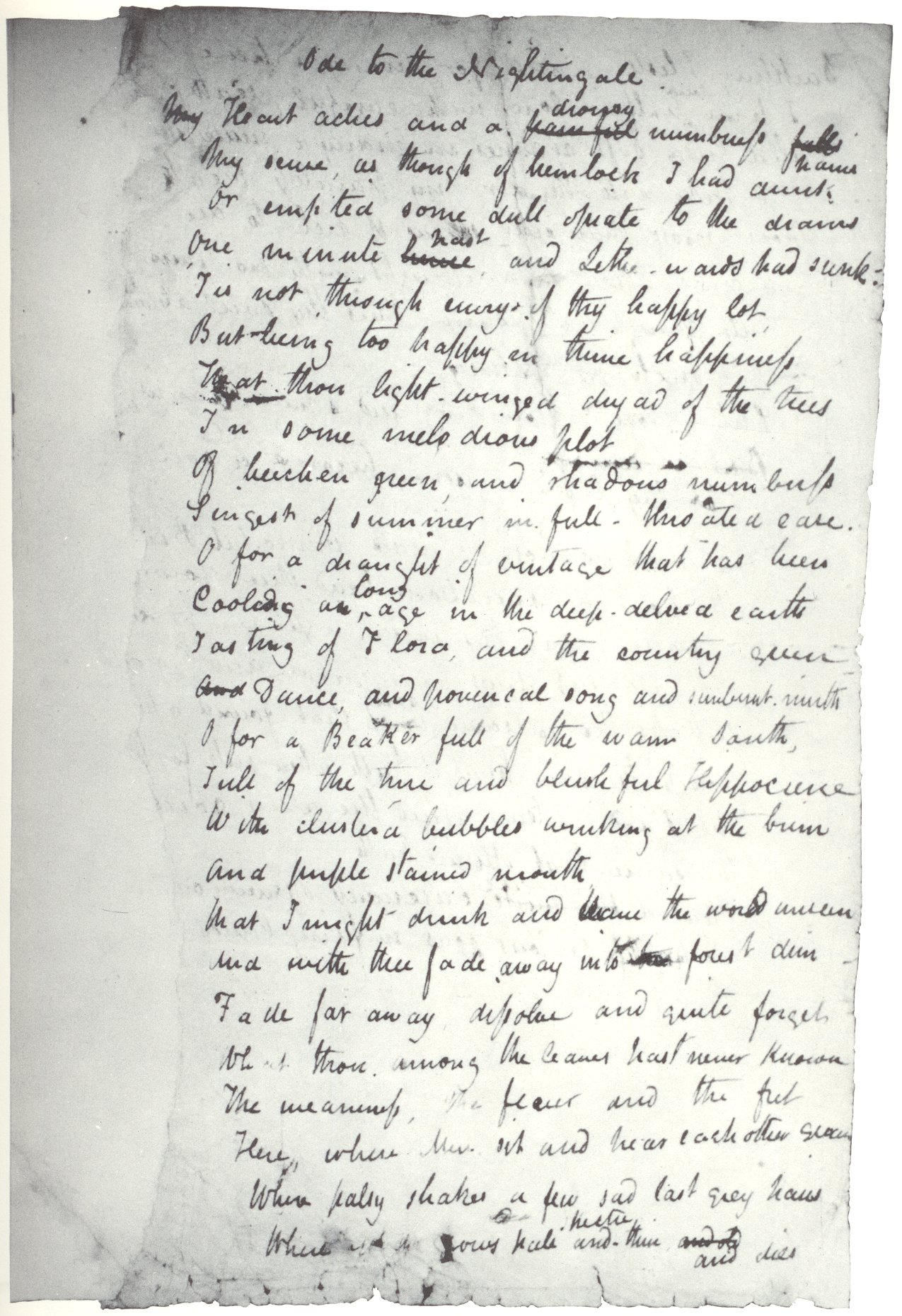.


It was dark in the covert. From the unseen underwoods came a trill. My friend who had taken me walking in this green Somerset lane paused to listen.
Calm-throated, then rising, a quick buoyant spiral of notes, keen, sweetly piercing. A few seconds and it was over.
"Have you ever heard a nightingale?" my friend asked. This was May 1965 or so.
I hadn't. I was, what, twenty-four, twenty-five?
In the spring of 1819 Keats was twenty-three. He had not far to go.
Coleridge also heard the nightingale in Highgate, early, that forward spring.
The reclusive night-wandering bird, pulled toward the poets' gardens beneath a waxing moon.
Sorrows, mysteries, businesses and sillinesses: human things played out to the backdrop of a deeply earth-tuned melody.
And then, forever, the brevity of the northern summer nights.


Ode to the Nightingale: holograph draft: John Keats, 1819
Nightingale (Luscinia megarhynchos): illustration in Naturgeschichte der Vögel, J. F. Naumann, 1905
Here's a nice recording of a nightingale, for those who'd like musical accompaniment to their reading!
ReplyDeletehttp://www.youtube.com/watch?v=BTkZRO-FYTM
Zeph,
ReplyDeleteMagnificent. If one could spend one's nights singing like that, one might wish day would never come. And the bluebells on the Northamptonshire forest floor put me in mind of the bluebell scene from Bright Star.
The adjacent nightingale clips from Russia, Sweden and the Netherlands suggest these brilliant singers offer local variations on the basic stunning repertoire. This 14 seconds of Amsterdam nightingale-song-evidence includes that rare thing, an actual sighting of this shyest of birds. Amazing throat action lets us see where the throbbing pulse of the song is coming from:
Deep-Throated Song
And then there's this high-quality DAT recording in stereo from a forest near Cologne with a visual preview that lets you see the astonishing range of the song in waveform:
Uncompressed Nightingale Song in Waveform
Finally, for the deep-end nightingale nut (that would not include our cats, who are mightily discombobulated by being surrounded by this virtual night forest of piercing song), this sound clip from the pine woodlands of southern Spain, also offering the peaks-and-valleys visual waveform pattern in preview, is recorded on less sophisticated equipment in mono, but from closer-up (ten metres). Were I a nightingale, this is where I'd want to sing from:
Gypsy Nightingale Waveform
First of all, I am amazed at the interpretation of the title of the poem you are referring to: Ode to a Nightingale. How ironic can it be having a great poet writing an ode to a bird whose singing itself is an ode to nature, to life? Amazing indeed.
ReplyDeleteAnd no wonder the bird sings at night. Its chanting is worthy of a dream.
And in the generosity of its secret waking song we may find a hidden space wherein to dream on...
ReplyDelete